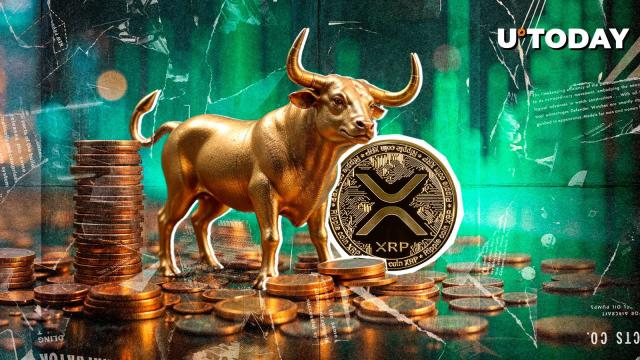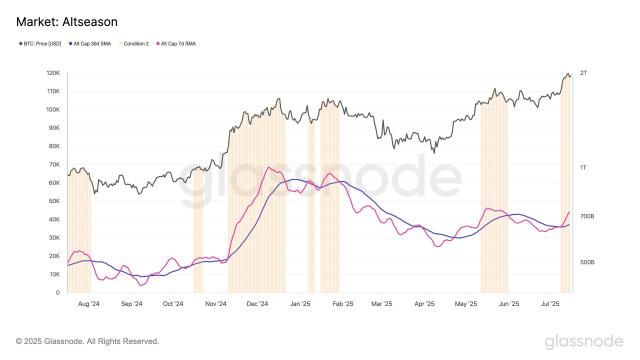Author: Alertforalpha
Translated by: Blockchain in Plain Language

On July 4th, while most Americans were busy preparing barbecues and fireworks, the cryptocurrency world witnessed a more shocking event: 9 billion dollars worth of Bitcoin suddenly awakened after 14 years of silence.
Four wallets holding 80,000 bitcoins - each initially purchased for less than $5 - suddenly became active. This timing provided a breeding ground for conspiracy theories, with almost everyone drawing the same conclusion: Bitcoin's founder Satoshi Nakamoto had returned.
Spoiler alert: This is not Satoshi. But the real story is even more compelling.
Bitcoin's Great Awakening
Imagine buying something for $5 in 2011 and completely forgetting about it. Today, you discover it's worth over $100,000. Multiply this number by 80,000, and you've witnessed the most incredible investment return in human history - a staggering 141 million% return.
This is exactly the experience of this mysterious whale. When Bitcoin's price was negligible, someone accumulated a massive amount of Bitcoin and then completely disappeared. No transactions, no activity, just silence in the digital world for over a decade.
The wallet movement pattern is crucial:
First transfer: 20,000 bitcoins (approximately $2.2 billion) Second transfer: 10,000 bitcoins (approximately $1.1 billion) Subsequent transfers, totaling 80,000 bitcoins, involving four wallets
Why Everyone Thought It Was Satoshi
When ancient Bitcoin wallets suddenly became active, the crypto community (especially discussions on X platform) instantly exploded. The timing seemed suspicious - July 4th, US Independence Day. The transferred amount was massive, and these wallets had not moved since Bitcoin's early days when only a few people held large amounts of Bitcoin.
The crypto community's first reaction was to fear the worst: if Satoshi started selling Bitcoin, the entire market could collapse. After all, it's estimated that Satoshi holds about 1 million bitcoins that have never moved. If these coins entered the market, it would cause an earthquake-like impact.
Connection to Mt. Gox
But blockchain analysts, like digital detectives, quickly discovered key clues. These wallets had a direct connection to Mt. Gox - the infamous Bitcoin exchange that collapsed in 2014 after losing 850,000 bitcoins to a hacker attack.
At its peak, Mt. Gox processed about 70% of Bitcoin transactions. The connection of these dormant wallets to Mt. Gox was like finding fingerprints at a crime scene.
Roger Ver: Bitcoin's First Preacher
Through blockchain analysis, 99% of the evidence points to one person: Roger Ver, known as "Bitcoin Jesus" for his early passionate promotion of Bitcoin. In Bitcoin's first decade, Ver was like an early Michael Saylor, preaching its potential when most people thought Bitcoin was just a "network joke currency".
Ver's connection to Mt. Gox was well-known. He even shot promotional videos for the exchange, endorsing their legitimacy at their Tokyo headquarters. When Mt. Gox collapsed, Ver was among those who lost a large amount of Bitcoin.
Early Bitcoin Ecosystem
To understand the significance of this event, we need to look back at Bitcoin's early days. It was an era of:
- Bitcoin priced under $5
- Few existing trading platforms
- Most people had never heard of cryptocurrency
- An age when ordinary computers could mine
Ver was one of the few who truly believed in Bitcoin's potential. He not only bought Bitcoin but also promoted it, funded Bitcoin startups, and helped build the early ecosystem.
Why This Is Not Bad News
Unveiling the identity mystery actually provides reassurance for the following reasons:
- Not Satoshi: The mysterious creator's approximately 1 million bitcoins remain untouched. If Satoshi started selling, that would be truly market-shaking news.
- Roger Ver's large Bitcoin holdings are well-known: This is not surprising. Ver has always openly discussed his Bitcoin holdings and promotion efforts.
- Demonstrates Bitcoin's resilience: Even with large-scale transfers by early whales, the market did not collapse. Bitcoin has far surpassed the early adopter stage.
The Bigger Picture
This event highlights Bitcoin's key evolution. When these wallets last moved in 2011, Bitcoin was just an experiment for cryptographers and early tech enthusiasts. Now, it's viewed as "digital gold" by institutions, governments, and mainstream investors.
The scale of change is stunning:
From $5 to over $100,000 per coin From amateur mining to industrial operations From technological curiosity to government reserve assets From a single trading platform (Mt. Gox) to hundreds of exchanges
Significance for Current Investors
Roger Ver's story demonstrates the massive opportunities in crypto investments and the patience required. Ver experienced Bitcoin's darkest moments - multiple crashes, regulatory uncertainty, exchange collapses, and years of skepticism.
But it also shows we're still in the early stages. One analyst noted that Bitcoin's adoption is approximately equivalent to the internet in 1996. The internet's exponential growth after 1996 suggests Bitcoin's mainstream adoption has just begun.
Trust Factor
There's another angle worth considering: in an era of voice cloning and deep fakes, we need trust systems that don't rely on central institutions. Bitcoin's blockchain provides mathematical certainty - which is why the US wants to hold 1 million bitcoins and why enterprises are adding it to their balance sheets.
Circle and Stablecoin Connections
Speaking of trust and adoption, Circle (stock code: CIRL) recently went public, with its stock price soaring from $31 to $242 in 10 days. Circle issues the second-largest stablecoin USDC, and the key point is - most stablecoins run on Ethereum.
This creates an interesting dynamic: as stablecoin adoption surges (driven by government recognition), Ethereum becomes an infrastructure pillar. It's like betting on railway companies during the gold rush.
Looking Ahead
The July 4th whale transfer had minimal impact on Bitcoin's price, with the market quickly recovering from initial selling pressure. More importantly, it shows the maturity of the crypto ecosystem.
We're about to enter the congressional "Crypto Week" (July 14-18), with major legislation like the Clear Act and Genius Act set for voting. Combined with growing institutional adoption and ETF approvals, the foundation for crypto's next growth phase is being laid.
The Real Lesson
Roger Ver's revelation tells us that Bitcoin's most successful early adopters were not short-term traders or speculators - they were believers who endured everything. Going from $5 to $100,000 requires a belief rare in any investment.
Whether you're buying Bitcoin today or have held for years, the question is not whether it's too late. 95% of investors still don't own Bitcoin, indicating we might still be in the early stages of this technological transformation.
This mysterious whale is not Satoshi's return - it's just another reminder that in the Bitcoin world, patience and belief in technology often bring almost unimaginable returns.







